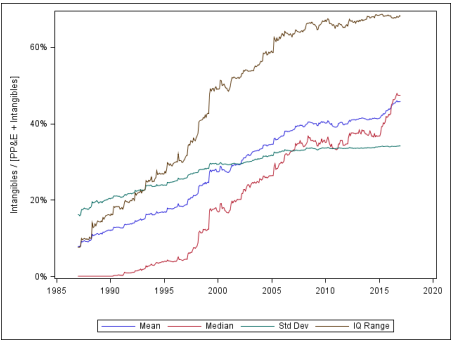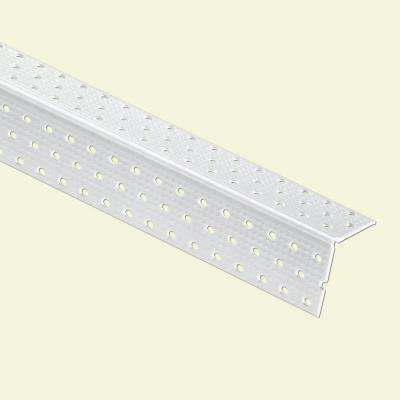Nondurable Goods: Product-Specific Data


The Department of Commerce defines nondurable goods as products with a lifetime of less than three years. EPA followed this definition to the greatest extent possible for this analysis. Consumer durable goods have a significant life span, often three years or more .
The data in the table below are from 1960 to 2018, relating to the total number of tons of other non-packaging paper generated, recycled, composted, combusted with energy recovery and landfilled. The data in the table below are from 1960 to 2018, relating to the total number of tons of standard mail generated, recycled, composted, combusted with energy recovery and landfilled. The data in the table below are from 1960 to 2018, relating to the total number of tons of magazines generated, recycled, composted, combusted with energy recovery and landfilled. The data in the table below are from 1960 to 2018, relating to the total number of tons of books generated, recycled, composted, combusted with energy recovery and landfilled. Consumer services are intangible products or actions that are typically produced and consumed simultaneously.

Food, cosmetics, toiletries, cigarettes, and beverages are short-lived, as are those that die during use. Private goods are product or service produced by a private company and purchased to increase the usefulness or satisfaction of the buyer. Most goods and services consumed in a market economy are private goods, and their prices are to some extent determined by market forces of supply and demand. Over the past five years, there has been a sharp jump in consumer durables, as rising disposable incomes have boosted consumption and higher food prices have boosted value. Some are similar to consumer durable goods, such as computers, telephones, and automobiles.
Similar to Marketing of consumer durables and non durable goods and (
Consumer non durables are goods that are consumed for one or more uses; expendables. Durable consumer goods are further divided into packaged and unpackaged. These businesses specialize in selling durable goods to other businesses in bulk and at cheaper prices than what average consumers pay. Examples of durable goods used by businesses include machinery and equipment. Erika Rasure is globally-recognized as a leading consumer economics subject matter expert, researcher, and educator. She is a financial therapist and transformational coach, with a special interest in helping women learn how to invest.
It can skew the month-to-month results if a large order for some items comes through one month. Orders and shipments of durable goods are reported by the Census Bureau monthly. It means that businesses and consumers are expecting the economy to improve when these orders increase.

According to Cooper “durability is the ability of a product to perform its required function over a lengthy period under normal conditions of use without excessive expenditure on maintenance or repair”. Several units may be used to measure the durability of a product according to its field of application such as years of existence, hours of use and operational cycles. Occasionally, a nondurable good may be seen as durable if it is made to higher-quality standards or if the customer will only use the item infrequently, thus increasing its lifespan. The constant updating and improvement of these products mean that the goods last less and less time in the hands of a consumer. Consumer non durable goods or soft goods are the opposite of durable goods and are called consumables.
Economists track the purchasing of durable goods closely because the reports can display a lot about an economy. Durable goods can also be called consumer durables and these products can hold their value after many uses, much longer than non-durables. Non-durable goods lose most of their economic value after the first use. Some durable goods can be wise investments where people can store their wealth in. Some examples of durable goods are cars, property, appliances, machinery, electronics, and jewelry. Companies that primarily sell durable goods are selling these products at higher prices since they last longer and are usually created with longevity in mind.
What defines a durable good?
The export or recycling of these textiles amounted to 240,000 tons in 2018 (15.8 percent recycling rate). These amounted to an estimated 3.7 million tons, or 1.3 percent of MSW generation, in 2018. Marketing mail includes paper made with both groundwood and chemical pulps. Information on specific types of nondurable, paper and paperboard examples of non durable goods products can be found in the subsections below or in Tables 5 and 18 through 21 of the 2018 Data Tables. Consumers usually compare attributes of shopping products such as quality, price, and style between other products. … Airline tickets, furniture, electronics, clothing, and phones are all examples of shopping products.
- Companies that primarily sell durable goods are selling these products at higher prices since they last longer and are usually created with longevity in mind.
- This category includes estimates of both infant diapers and adult incontinence products.
- As a member, you’ll also get unlimited access to over 88,000 lessons in math, English, science, history, and more.
A good explanation for understanding the concept of consumer durables is to compare them with consumer durables that should be used for more than 3 years. The BEA includes food, pharmaceuticals, tobacco, clothing, household supplies, personal care products, magazines, and gasoline in this category. There are global organizations that are campaigning for the reduced production of many non-durable goods because of the amount of waste they can cause. Plastic and paper products make up the majority of landfills and waste management centers. Durables, also known as durable goods or consumer durables, are goods that do not need to be purchased very often and typically last for at least three years. Economists keep a close eye on consumer consumption of durables, as it is considered a good indicator of the strength of the economy.
Tissue Paper and Towels
The types of products that are considered consumer durable goods include furniture, appliances, automobiles, jewelry, and books. If it is manufactured and intended to last the consumer for three years or longer, it is categorized as a durable good. The data in the table below are from 1960 to 2018, relating to the total number of tons of towels, sheets and pillowcases generated, recycled, composted, combusted with energy recovery and landfilled. The data in the table below are from 1960 to 2018, relating to the total number of tons of clothing and footwear generated, recycled, composted, combusted with energy recovery and landfilled. The data in the table below are from 1960 to 2018, relating to the total number of tons of office-type paper generated, recycled, composted, combusted with energy recovery and landfilled. The data in the table below are from 1960 to 2018, relating to the total number of tons of newspapers/mechanical papers generated, recycled, composted, combusted with energy recovery and landfilled.
Investors take advantage of this difference by emphasizing buying stocks of durable goods in a developing economy and changing the course to investing in non-durable goods as the economic cycle shrinks. Although durable goods can be both rented and purchased, non-durable goods are generally not rented out. The purchase of durable goods belongs to the category of “demand for goods”, while the purchase of non-durable goods – to the category of “consumption of goods”. Capital goods excluding defense orders include machinery and equipment used in everyday business. It removes the effects of large orders for defense, commercial aircraft, and automobiles.
EPA did not identify any significant recycling or composting of disposable diapers in 2018. Non-durable goods or soft goods are the opposite of durable goods and are called consumables. They may be defined as goods that are immediately consumed in one use or have a lifespan of less than three years. Examples of non-durable goods include cosmetics, cleaning products, food, fuel, beer, cigarettes, paper products, rubber, textiles, clothing and footwear. You can find examples of softs in futures in ourFundamentals of Trading Softs Futures Guide.
The largest decline in consumer spending was actually in the category of consumer services, down 13.3 percent in Q2. In economics, durable goods and nondurable goods play a crucial role. Demand and pricing on durable goods can impact the overall health of the economy.
Newspapers/Mechanical Papers
The data in the table below are from 1960 to 2018, relating to the total number of tons of all nondurable goods generated, recycled, composted, combusted with energy recovery and landfilled. Consumer durables are a category of consumer products that do not have to be purchased frequently because they are made to last for an extended period of time . Examples of consumer durable goods include automobiles, furniture, appliances, jewelry, and books.
In 2018, about 4.1 million tons of other miscellaneous nondurable goods waste was produced. Of this total, about 4.4 percent was recycled, while 18.5 percent was combusted with energy recovery and 77.1 percent was sent to landfills. Other commercial printing includes a wide range of paper items, including brochures, reports, menus and invitations. Both groundwood and chemical pulps can be found in these varied items. Generation was two million tons, or 0.7 percent of MSW generation in 2018. Books made of groundwood and chemical pulp amounted to approximately 690,000 tons, or 0.2 percent of total MSW generation in 2018.
With its high impact strength, it is ideal for structures that are in places where there is snow or hail so that the building is not impacted by such throws. Certain plastics such as ABS, polycarbonate, PPSU, and UHMW have outstanding toughness. Plastics are frequently used for industrial, construction, and military applications when durability is critical. It is important to note that the impact resistance of plastic materials is temperature-dependent.
Your list includes various food items, toiletry and beauty aids, a pair of shoes, some socks, a notebook, a bicycle, some greeting cards and an assortment of candles. Durable goods are those goods that don’t wear out quickly and last over a long period. EPA estimated that 1.5 million tons of towels, sheets and pillowcases were generated in 2018, using a methodology similar to that for clothing.
It also means that you have a better chance of successfully asking for a raise or having better returns on your stocks and mutual funds. Durable goods are expensive items that you can expect to last for three years or more. Businesses and consumers only buy these big-ticket items when they feel confident about the economy. They put off buying durable goods until things get better when they’re not sure. From a business standpoint, there are convenience, shopping, specialty, and unsought goods.


